Student Entrepreneurs Take On Ocean Pollution and Fast Fashion
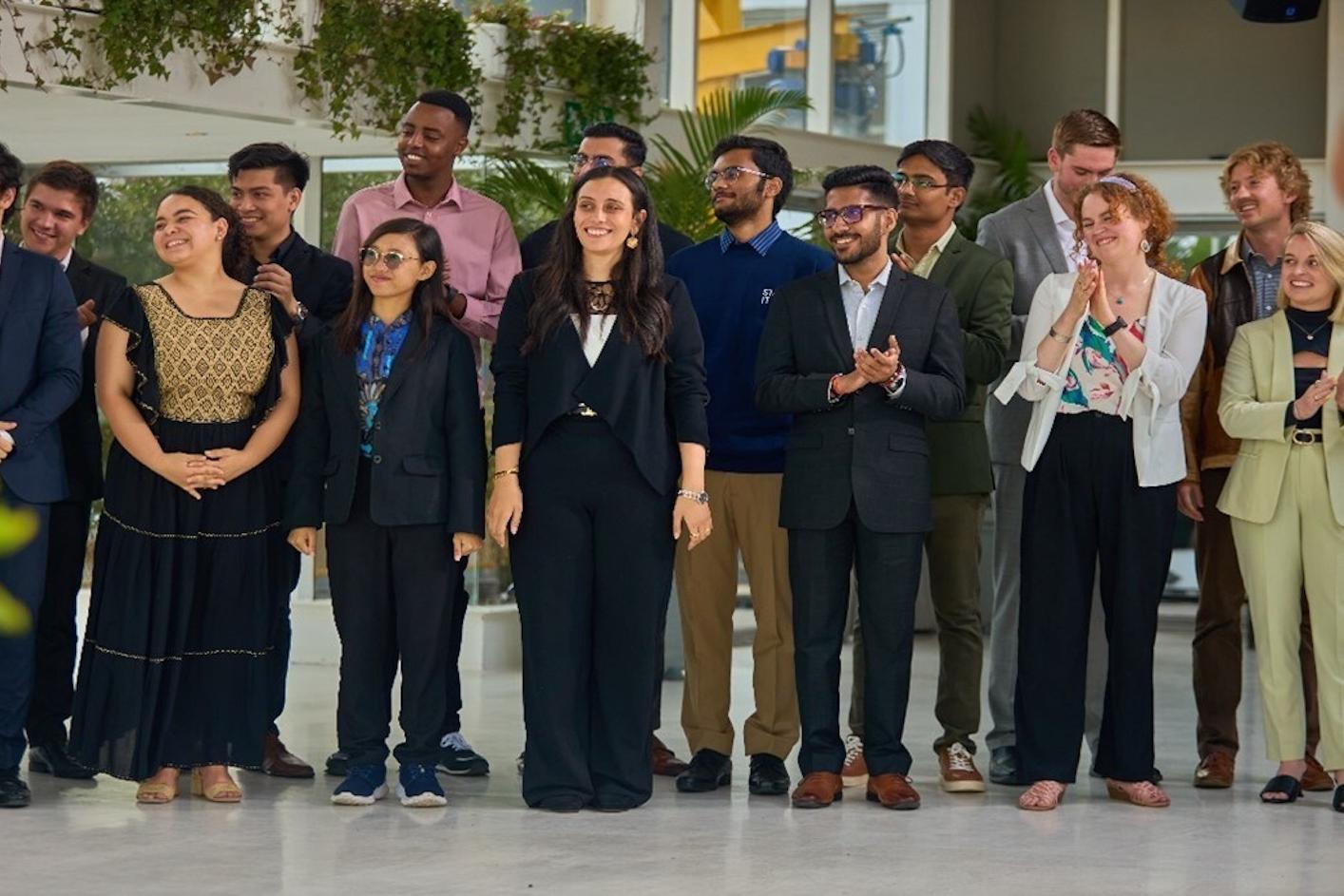
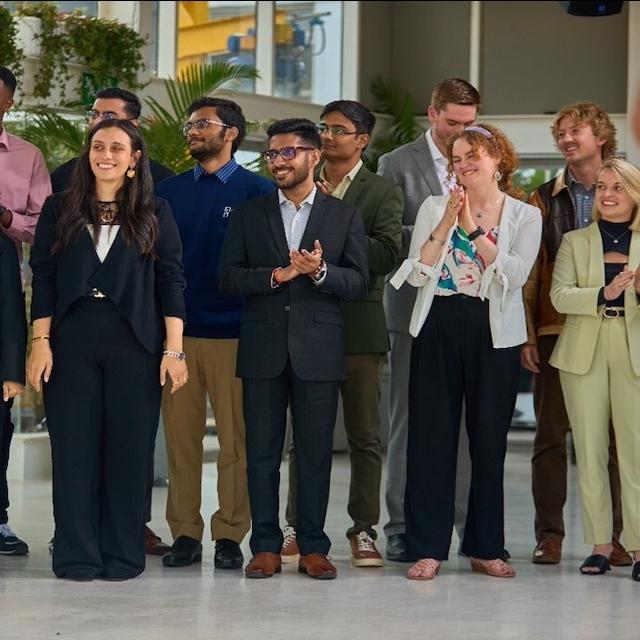
Yara Yousry (fourth from left, front row) and Logan James (first from right, back row) stand among the 2024 semi finalists at the Global Student Entrepreneur Awards. (Image courtesy of Entrepreneurs' Organization.)
It can be argued that taking discarded materials and transforming them into something useful is the essence of recycling. That’s how Logan James, a finance major at Utah State University, is working to bring sustainability to fashion.
James is the founder of ThriftJam, a vintage clothing store selling handcrafted clothes made from discarded clothing. ThriftJam operates from a refurbished school bus to meet consumers in the middle ground between brick-and-motor stores and online shopping. It was originally conceived as a side hustle to raise funds for college, James said.
“We initially started by just curating vintage collections, which is very common,” James told TriplePundit. “After about two years of doing that on the side, we got involved with the Center for Entrepreneurship at Utah State … They really pushed us and were like, ‘Hey, you know what? You could make this a full-time thing if you put a unique spin on it.’”
That’s when ThriftJam started selling its own designs from unwearable old clothing.
“We figured, there’s a lot of different types of fabrics and materials that if we’re able to cut out the wearable parts, the usable parts, we could potentially create some new pieces out of them,” James said. “We just got started on some designs and got very lucky with a connection to one of our vintage suppliers, who owns a recycling center.”
ThriftJam got "very lucky" again when its first recycled high-end piece was a big hit, he said.
“We sold enough of them to pile onto that idea and design new pieces and keep rolling with it,” James said.
About a year and a half ago ThriftJam reached a potential turning point when one of its designers suggested they use pieces of recycled garments alongside some new fabrics to ensure a higher quality product.
“We really thought about that for a long time because it would really streamline our manufacturing and bring down prices,” James said. “It’s far more expensive to use recycled materials than it is to use new materials … But at that point, we decided that we didn’t want to feel like we were lying to our customers in any way, so we decided to stick with 100 percent recycled materials.”
James is among several budding sustainability entrepreneurs from across the globe whose efforts are documented in a video series that follows their progress through the Global Student Entrepreneur Awards called “Start it Up.”
Sponsored by the nonprofit Entrepreneurs’ Organization, the competition hosts college students from around the world who run a business with at least $500 in revenue or $1,000 in investment. Those featured in the video series are their countries’ sole representatives in the finals, having already won local and national competitions where their entrepreneurial skills and businesses were judged.
The competition is unique because it focuses on “the individual and their capacity to sustain in the face of challenges in their entrepreneurial journey,” said Tamarin Morrell, director of Entrepreneurs’ Organization.
Another contestant, Yara Yousry, an architecture and engineering major at the American University in Cairo, launched the social enterprise Bahtinet to address declining fisheries and lost fishing gear pollution. Bahtinet aims to introduce local, sustainable, biodegradable and affordable fishing nets manufactured from banana tree waste to fishing communities, creating more jobs for Egyptian women in the process.
Yousry studied the decline of the fishing community El-Bahtiny in an urban design course, particularly the impact of the increasing cost of fishing nets. Traditionally, fishing nets in Egyptian communities are made of nylon or silk, expensive materials made even more costly because of the devaluation of the Egyptian pound. Yousry teamed up with three mechanical engineering students to seek a solution.
The group discovered that a locally available material, banana tree fiber, could be used to fashion fishing nets that were sustainable and much cheaper. But convincing the residents of a conservative fishing community to listen to four female university students wasn’t easy. In a more conservative community like El-Bahtiny, fishermen usually like to talk with other fishermen or to community anchors, Yousry said.
“That’s why we started reaching out to community anchors, communicating with them our idea and our initiative,” she said. “And they were very, very open to promote the product to other fishermen.”
Yousry and her colleagues handle the logistics of sourcing banana fibers, provide training for men and women in weaving the nets, and teach the fishermen about the importance of using sustainable materials in fishing.
Half of the people who work in the Egyptian fishing industry are women, who have historically woven fishing nets from materials like flax before nylon nets became more commonly used. Training women to weave the fishing nets puts them “back on the wheel of economic development” in ways that aren’t disruptive to social norms, Yousry said.
Yousry and James didn’t take home the first-place prize, but they gained plenty from the competition in other ways.
“I think if you interviewed any of the people that were involved in the competition, they would say the same thing,” James said. “The connections they made with not only the other competitors, but the mentors there who are also from the whole globe, that’s by far the most valuable part of the competition in itself.”
Yousry echoed the sentiment.
“It was a life changing experience, and it somehow showed to me what true entrepreneurship is really about,” she said. “It’s about making an impact. It’s about supporting each other. It was a safe space to share ideas and grow together.”
How Businesses Can Support Reproductive Rights


(Images: Gayatri Malhotra/Unsplash)
This story about how business leaders can support reproductive rights is part of The Solutions Effect, a monthly newsletter covering the best of solutions journalism in the sustainability and social impact space. If you aren't already getting this newsletter, you can sign up here.
Reproductive rights are a focal point of the upcoming United States elections. They’ll be on the ballot in 10 states, are a key topic of discussion on the campaign trail, and impact women and everyone else — yes, everyone else — across the nation.
In a country where childcare responsibilities largely fall on women and parental leave policies lag behind the rest of the world, taking away a woman’s ability to make their own reproductive decisions radically impacts their ability to live the life of their choosing, said Michelle Greene, senior advisor for the Women and Democracy Initiative at the bipartisan, pro-democracy Leadership Now Project.
“This is really fundamental to women's ability to make their own choices about how their lives and their careers will unfold,” Greene said. “For this fundamental right to be impaired by misinformation and an undemocratic process is highly problematic.”
The ripple effect extends to women’s annual income, participation in the labor force, workplace productivity and the entire national economy.
The 16 states that instituted abortion bans or extreme restrictions after the Supreme Court overturned Roe v. Wade cost the U.S. economy an estimated $68 billion, according to an analysis by the Institute for Women’s Policy Research. If reproductive health restrictions were eliminated, employed women would have earned over $8 billion more in 2023 and over 360,500 more women would participate in the workforce each year.
“So there's a whole economic case for why this is important,” Greene said. “The even more important point is literally women are dying, and that just should not be happening. And it certainly should not be happening because of decisions made by a not-fully-representative body that is not reflecting the will of the vast majority of Americans.”
That’s not hyperbole. A Gender Equity Policy Institute report found that mothers in states with abortion bans are up to three times more likely to die during pregnancy, childbirth or soon after giving birth. Earlier this month, the organization found that Texas’s maternal mortality rate rose 56 percent from 2019 to 2022, far outpacing the national average of 11 percent. The state’s ban on abortion care began in 2021.
Despite the seeming polarization of the issue, 63 percent of Americans — four percentage points more than in 2021 — say abortion should be legal in most or all cases, according to a recent poll from the Pew Research Center. That trend has remained stable for several years.
Seven in 10 Americans also support access to in vitro fertilization (IVF), with just 8 percent saying it’s a bad thing, according to another Pew poll. The fertility treatment is under the reproductive rights spotlight in U.S. politics, too.
“This is an issue where there is actually pretty widespread agreement across Republicans and Democrats, across men and women, about the fundamental right to have reproductive choice,” Greene said. “One of the disturbing realities of our democracy is that women are underrepresented. They're underrepresented, certainly, in our federal government. They're underrepresented in almost every one of our state houses. So you see decisions being made that are at odds with what the democratic majority actually thinks on this issue. And those are often being made by legislative bodies that are really not representative of the broader population.”
Considering all of this, I asked Greene if business leaders have a role to play.
“I think the answer to that happens at a few different levels,” Greene said. “There's the level of the individual business, and we've seen businesses taking many different stances to how they can address that at an individual level.”
Businesses in restrictive states might support employees who need to travel for reproductive health services, offer benefits and healthcare coverage related to reproductive rights, or give employees paid time off to vote, she said.
“Then when we look more broadly, there's also: What is business as a whole doing to speak up on issues?” Greene said. “There's a lot of controversy around should business as a whole be speaking up on individual issues … But I think there really is a strong case to be made that business needs to protect democracy, and business needs to play a role in protecting democracy. And that can happen in lots of different ways.”
Though it’s not a business leader’s job to fix democracy, they have the trust to help do it, she said. Business is still seen as the only institution truly trusted by the public in the annual Trust Barometer Global Report from the Edelman Trust Institute. So making public statements, signing on to statements, and using their voices can have a big impact.
Last year, the Leadership Now Project worked with Ohio business leaders to express opposition to a proposed constitutional amendment that would have required a 60 percent supermajority to pass constitutional amendments, making it more difficult to protect reproductive rights in an election later that year.
The campaign consisted of an open letter and advertisements featuring local business leaders, including the founder of Columbus-based Jeni’s Splendid Ice Creams, Jeni Britton.
“Columbus is a place where everyone’s voice matters,” Britton says in the video. “It is the thing that people see when they first come here, that they matter, their voice matters, and that they can make a difference here. I think Issue 1 puts that in jeopardy in a huge way. Please vote on August 8, and vote no on Issue 1. It’s the only thing on the ballot.”
Local voices have a lot of influence, Greene said. In this case, hearing from a local leader might have encouraged some of the voters who resoundingly rejected the proposal at the polls and, later that year, passed a constitutional amendment to protect reproductive health care.
“Certainly folks in Ohio felt like that was an important voice,” Greene said. “That was one of their own, right? It was a business leader from Ohio. It wasn't someone from outside coming and telling them what to do.”
Of course, businesses should not run the country and dictate policy decisions in lieu of voters, but there are appropriate times for them to step up to ensure democracy is protected, Greene said.
“I don't think any of us want to live in a country where businesses dictate what our policies should be or where campaign donations dictate what our policies should be,” she said. “It’s not the role of business to dictate policy at all, but I think we are living in an extreme time where democracy is at peril. And for businesses, I think there are some realities around if you want to be part of a thriving economy, if you want to have the conditions in place for business to thrive, our democracy is fundamental to that, and that is at risk.”
Electricity Demand is Rising, But Renewables Are Positioned to Help
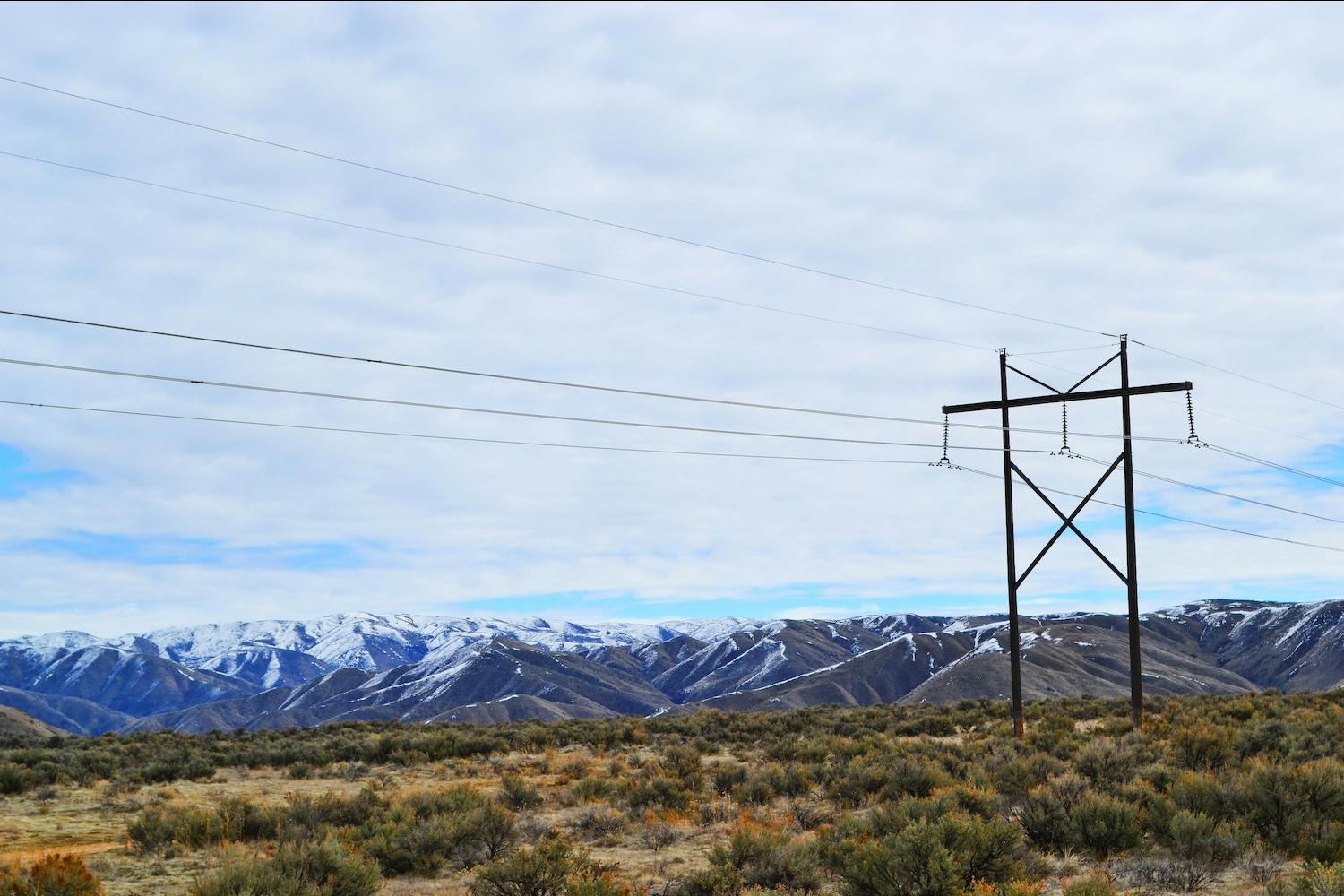
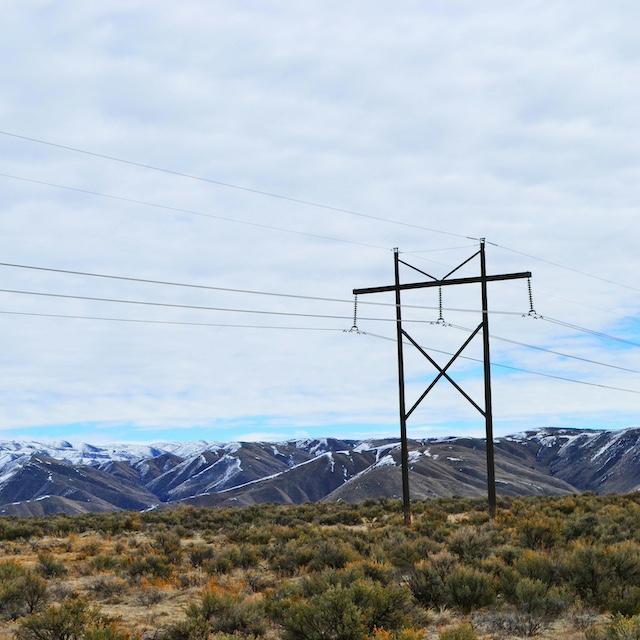
(Image: Brett Sayles/Pexels)
The artificial intelligence (AI) revolution is powering innovation, but it's also powering a surge in electricity demand that could strain our energy grid and lead to higher utility bills for consumers, according to a new report from the Bank of America Institute. While consumers recently saw some relief with a slight decline in the median utility payment per customer in early 2024, utility bills remain significantly higher than they were five years ago.
“The steady rise in population is a bedrock of demand growth,” said David Tinsley, senior economist at the Bank of America Institute. “But industry and commerce, already massive consumers of electricity, together have double the demand for electricity as residential use.”
The report identifies several key factors contributing to the escalating electricity demand. First, AI processes are incredibly energy-intensive, and AI chips require both substantial power to operate and to cool. The proliferation of data centers and cloud computing services, essential for supporting AI and other digital technologies, requires massive amounts of electricity for servers, storage and cooling systems.
“AI processes are so energy-hungry because they do things computationally faster,” Tinsley said. “For example, AI uses two kilowatt hours per 1,000 tasks, and AI chips run so many tasks per second that they get very hot, much more so than regular chips. The cooling requires electricity over and above what regular chips need. The use case is exploding.”
To meet current AI demand projections, the U.S. will need to increase its electricity generation capacity by 3 percent, Tinsley said.
Policy changes have also influenced electricity demand and use. Government incentives like the Inflation Reduction Act (IRA) and the CHIPS and Science Act have helped lead to a resurgence of North American manufacturing, including the construction and operation of new factories and manufacturing facilities, which requires a significant amount of power.
“The IRA and CHIPS Act have stimulated a lot of investment into manufacturing capacity in the U.S., so people are bringing their long supply chains back,” Tinsley said. “There are a lot of positives attached to that, but manufacturing tends to be an intense driver of electricity demand, so there will be increases to service the onshoring process.”
Additionally, the steady growth in the U.S. population, shifting demographics, the rise of electric vehicles, and demand for larger homes are putting further strain on the power grid.
As electricity demand continues to rise, lower-income households have the largest utility cost burden. Households with monthly incomes below $4,000 spend about 8 percent of their income on utilities, compared to only 1 percent for households earning over $10,000 monthly, according to the report.
However, while there has been some recent dips in utility bills, the report notes one solution that could bring about longer-term relief: renewable energy. Electricity generation in the U.S. is predicted to increase by 3 percent this year and 1 percent next year, according to the report. The majority of that growth comes from renewable energy sources — 70 percent from solar alone.
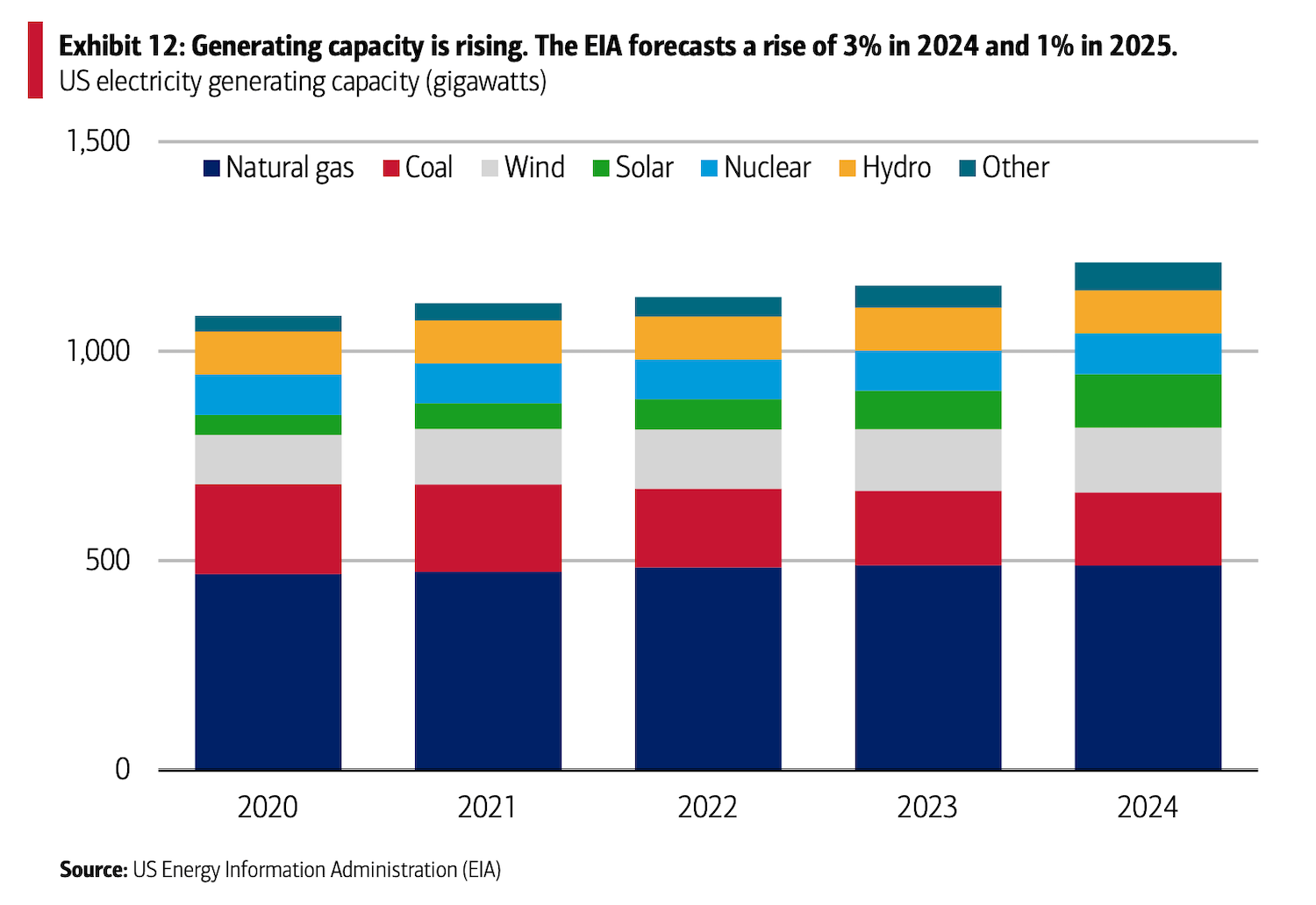
While renewable energy sources are expected to contribute significantly to new electricity generation moving forward, the U.S. currently relies on fossil fuels for about 60 percent of total power generation.
“The big question is can renewable electricity generation capacity rise to meet demand,” Tinsley said. “While AI is unpredictable, the good news is that most of the additional capacity currently forecasted is coming from solar, which has become cheaper. As that continues, it is possible for the supply of renewables to meet that demand. The current rise and strong investment in solar needs to continue.”
The future of utility costs and electricity demand is complex, with technological advancements and economic shifts likely to continue driving demand upward, which may lead to higher long-term costs.
Tinsley emphasized the importance of policymakers and stakeholders monitoring these trends to mitigate their impact on consumers, especially those most vulnerable. “The AI rollout is a multi-decade thing, so we can feel relatively comfortable that solar and renewables can build out in the next four to five years to meet the demand,” Tinsely said. “Policy needs to be supportive of that, ultimately.”
Smart Girls Uganda Helps Young Women Overcome Barriers to Education
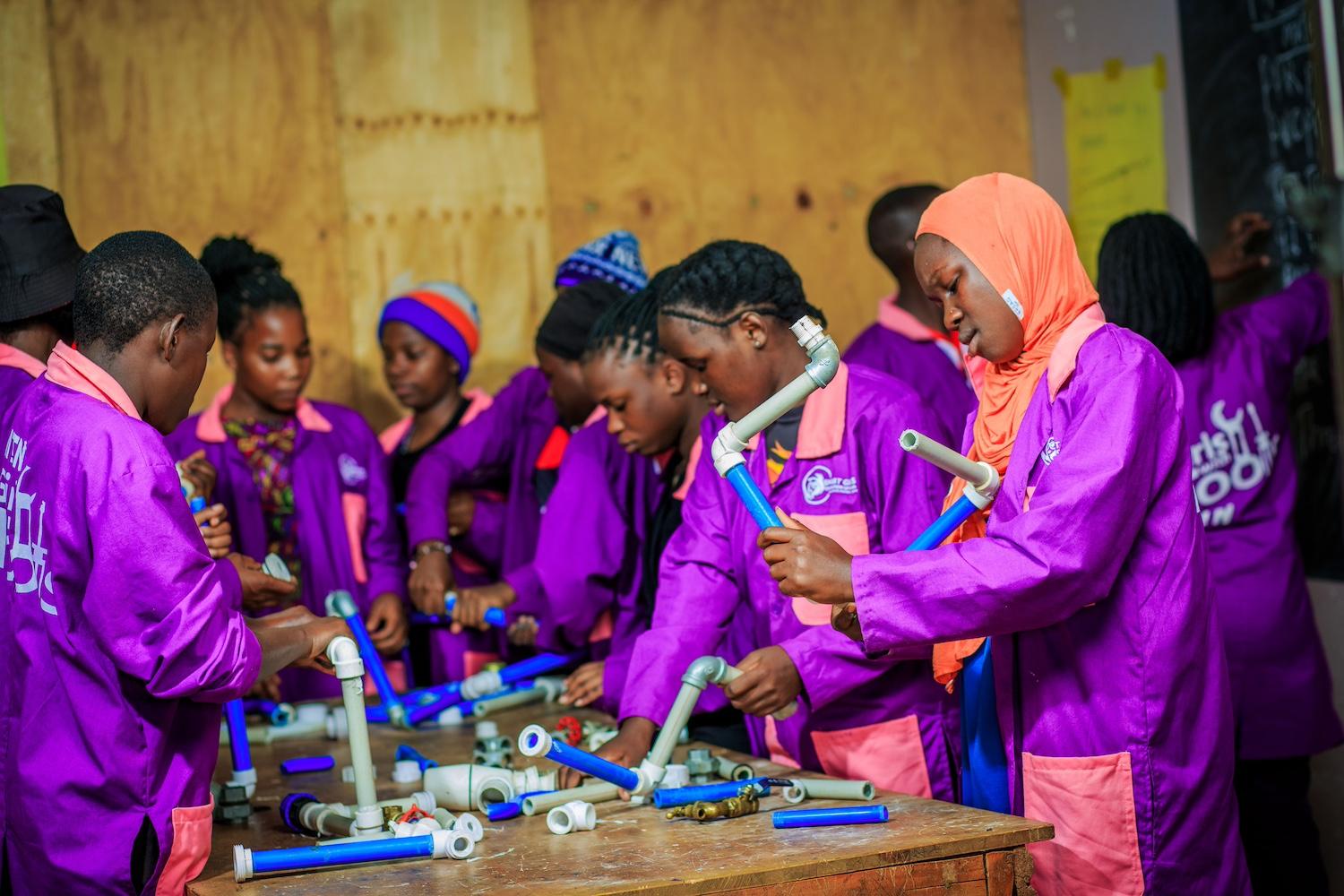
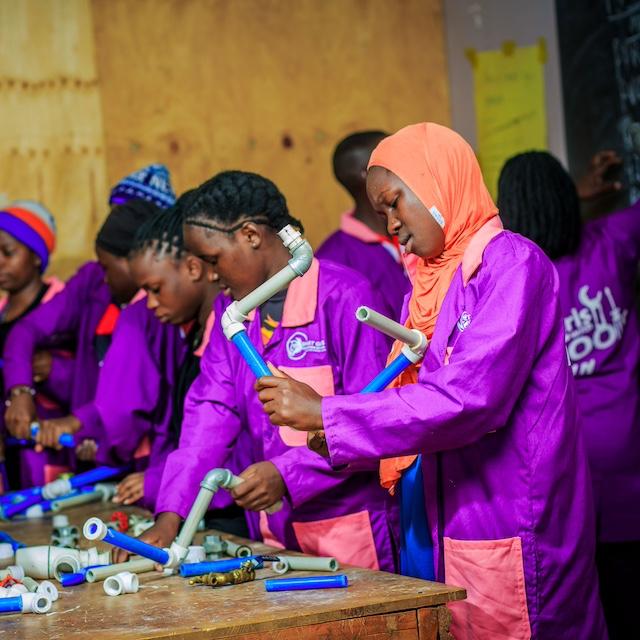
Smart Girls Uganda's Girls With Tools program teaches girls the necessary skills to build a career in male-dominated, non-traditional STEM industries. (Image courtesy of Smart Girls Uganda.)
Education and training have to be accessible to be effective. But for those in poor and rural communities, menstruation can be a barrier. Entrepreneur and innovator Jamila Mayanja recognized this and did something about it.
Mayanja founded the nonprofit Smart Girls Uganda, which offers education programs and ensures accessibility by distributing menstrual hygiene bags that solve one of the primary issues causing girls to drop out of school: period poverty.
Vocational and tech training brings success
“Smart Girls Uganda is a social enterprise I started to empower girls and women to live a healthy and economically sustainable lifestyle,” Mayanja told TriplePundit. “We do this through one of our biggest programs that is called the Girls With Tools, where we train girls in male-dominated, non-traditional, STEM [science, technology, engineering and math] skill sets. Skills like electrical engineering, mechanical engineering, motor engineering, building and construction welding.”
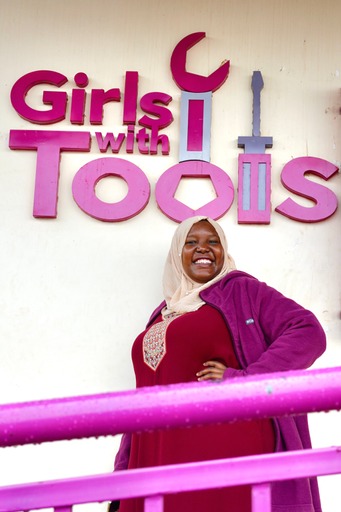
The organization also runs Girls in Tech, a four-month certification program that equips participants with computer skills. While the program ensures that graduates have the necessary tech literacy to succeed in their careers and is also available to community members, Mayanja said
So far, 729 students have graduated from Girls With Tools and another 210 are enrolled, Mayanja said. While most participants are girls or young women, boys and young men make up 20 percent of participants.
Girls in Tech, which began last year, has certified 529 graduates. The goal is to educate 500 students each year in computer literacy, 80 percent of which are also expected to be girls or young women.
“You'll be amazed if you come to Uganda,” Mayanja said of the young women who are now working in the country’s energy sector. Graduates of Girls With Tools are filling electrical engineering roles in the country’s newly developing oil industry, and they’ve signed a contract to employ more graduates in the industry every year.
Graduates are also working in garages and mechanical and water engineering, which she said made Smart Girls Uganda a household name. “Everybody now has started appreciating the need of hands-on skills, and mostly those vocational skills, for young women and how they're thriving in their job sector.”

A solution to period poverty
It’s a huge accomplishment for young women who would otherwise have very little opportunity for economic independence. “Some of them are usually school dropouts,” Mayanja said of Girls With Tools participants. “And we found out why … they're dropping out because of their menstruation periods.”
Not having access to proper menstruation products and facilities is a common cause of absenteeism and early school leaving worldwide. This issue is exacerbated in areas with limited resources and a lack of restroom facilities equipped for managing menstruation.
Mayanja, who was familiar with the problem before starting Smart Girls Uganda, used to hand out reusable pads. But that wasn’t enough to keep the girls in school, she said. The problem inspired her to develop a solar-powered smart bag made from recycled materials that would better meet their needs.
“It's a bag we make out of recycled [plastic] waste to make it waterproof, and then [we] add a solar panel to it that charges a light bulb in the bag,” Mayanja said. “That gives light to the girls after dark to be able to read their books, but also light [for] them when they're going to wash facilities at night to use to change their pads.”
The smart bags are made by tailoring students from Girls With Tools, thus providing them with employment, Mayanja said. The plastic used to make them is purchased from collectors, keeping plastic out of the environment and creating an income stream for the collectors.
In addition to giving the bags to students for free, they are sold at local markets and to local and international organizations. The proceeds fund more free bags for students in need. The bags are distributed with a pack of reusable pads.
Because of the bags, “More girls are being given the ability to stay in school during their menstruation period,” Mayanja said. “But also, we’ve indirectly given light in the home … because when the girls finished reading … the family uses the light.”
Scaling up will take time
Mayanja credits the American Express Leadership Academy, which she recently attended, with giving her the confidence she needs to scale up Smart Girls Uganda.
“It has really taught me [to] appreciate my resilience,” she said. “I was a bit depressed for my failure from scaling to South Africa. But being there and learning about how, [in the] leader's position I'm in, I need to be fine that sometimes I fail. But also to appreciate my hard work, and really understand that, to be able to do new strategies on getting up [from] that failure.”
Adirupa Sengupta — group chief executive at Common Purpose, which provides the programming for the academy — echoed the importance of confidence, resilience and leadership.
"We are committed to supporting leaders in the non-profit sector who are driving social impact," Sengupta said. "Visionary leaders like Jamila are at the forefront of addressing complex social challenges, and the academy provides them with the space to reflect, collaborate, and unlock new strategies for driving change."

Requests to scale the model have come in from other African countries like Nigeria, Tanzania and South Sudan, but Mayanja wants to take it slow. She’s interested in reaching all of Uganda before starting in other countries, and she wants to develop solid partnerships that will make scaling up less costly and more effective.
“The more I kept on learning … from the scale I started in South Africa, is that I needed more knowledge and more partnerships to scale, to scale properly without rushing, and so that my brand is not affected,” she said. “So yes, it can be replicated. … Don't be surprised if you see us in other countries, that same exact model, because we’re working on it.”
6 Reasons Companies Greenhush (And Why You Shouldn’t)


(Image: Cup of Couple/Pexels)
As the adage goes, “if you have nothing nice to say, don’t say anything at all.” Some companies are adopting this approach in their sustainability communications strategy through a practice known as “greenhushing.”
Greenhushing is when organizations keep quiet about environmental sustainability to avoid attention, even when they have strategies and efforts underway. At first glance, this may seem like a cautious — even logical — approach to mitigate reputational risk, but as a sustainability communications practice, it has significant drawbacks.
While businesses have valid reasons for greenhushing, just because companies can justify it, doesn’t necessarily mean they should. Here’s why the arguments for greenhushing — though understandable — are easily refutable.
1. Fears of being labelled greenwashers
Companies are hesitant to open themselves up to scrutiny, particularly if they’ve had a run of inadvertent greenwashing. There’s a certain leap of faith required from brands to spotlight their efforts and celebrate their successes. The inclination to accentuate the positive in sustainability communications has, in many cases, given way to skepticism of the veracity the company’s own efforts for fear that it may be positioned the wrong way or prove untrue due to an overlooked nuance. Considering this, greenhushing has an understandable allure.
But greenhushing is not the solution to greenwashing that it might seem. In fact, they’re just two sides of the same counterfeit coin in the sense that both are detrimental to brand reputation and corporate environmental action.
Just because greenwashing is typically inadvertent doesn’t mean it’s inevitable. How you communicate is in your control. If you know what you’re doing, are certain you’re not making false claims and can back them up with clear unimpeachable facts, your greenwashing risk is minimal. Do the work and investigation to gain this level of confidence. And remember: consumers are on a journey, too. If you’re intentional and authentic, they’ll be in your corner.
2. Concerns over consumer and stakeholder backlash
Much is made in the media about climate change denial and the deniers are doubling down on tactics that create headwinds for society’s progress toward net zero.
Even though the distrust of climate science is arguably most focused in the US, 54 percent of adults view climate change as a major threat. In Europe’s two largest economies, France and Germany, it’s 81 percent and 73 percent, respectively. You can be sure that the numbers are on your side. And as firsthand evidence of the climate crisis mounts, the odds of that trend reversing are low, especially as impacts are increasingly felt on an individual level. Further, if business leaders are seen as taking sustainability seriously, it will go a long way to normalizing it.
3. Lack of understanding and communication skills
Unless a company has put measures in place to communicate from a place of knowledge, the risk of miscommunicating remains high. Interpreting data and outcomes from sustainability initiatives does take a level of skill gained from hiring talent with the right expertise, training current employees or enlisting outside help. It’s true, sustainability isn’t an area where you want to be talking off the cuff. So, don’t do it.
Implement an upskilling program for your internal and external communications functions to support their subject-matter expertise on sustainability and key communications watchouts to consider. Ensure that your sustainability efforts and what they are meant to achieve are well-understood. Create governance mechanisms to sense-check what you put out there. Partner with organizations that have spent decades operating at the intersection of communications and sustainability science that can help you navigate the nuances of this ever-changing world
4. Worries about not doing enough
What if you’re not doing enough? This concern isn’t unfounded, since most companies still aren’t. It’s certainly true there’s brand risk to being perceived as taking inadequate sustainability action. In that sense, the fear of being exposed as not doing enough is understandable. But it does beg the question: Given the seriousness of the challenge facing humanity right now, what’s quantified as enough?
Rather than treating this apprehension as an excuse to greenhush, treat it as motivation to do more. Communicate your ongoing efforts and future goals authentically and transparently. Consumers understand that sustainability is a journey and appreciate brands that are honest about their progress and challenges.
5. Competitive concerns
It’s understandable that broadcasting internal initiatives to the competition in most cases is ill-advised. Anything you say could be used against you either through counter-communications or by setting a higher standard to surpass.
Don’t let competitive concerns cloud your competitive advantage. Transparency about your company’s sustainability efforts is more likely to enhance your competitive advantage than undermine it. Consumers want to feel good about their choices, even long after they’ve made them. How many brands have a customer base that can also be described as a fan base? Moreover, it’s important not to lose sight of why you’re embarking on a sustainable transformation in the first place. Dare your competitors to rise to the challenge. The planet and your brand will be better for it.
6. Regulatory risks
Many companies could be taking a wait-and-see approach to ensure their communications pass regulatory muster or avoid having to report certain topics altogether. Between regulations such as the European Union’s Corporate Sustainability Reporting Directive, the United States Federal Trade Commission's Green Guides and various others, there's a real risk that making certain claims could lead to liability if they cannot be fully substantiated or if they inadvertently mislead consumers.
While it’s near-certain there will be regulatory considerations with sustainability communications, for the most part these initiatives are shaped by best practices already in use, like the Science Based Targets Initiative and Science Based Targets for Nature. Far from exacerbating legal and regulatory risks, proactive communication about sustainability efforts positions companies to better navigate the regulatory landscape, ensuring compliance and safeguarding against potential legal challenges. In other words, if you stay ready, you don’t have to get ready.
On some level, the upside to greenhushing is that companies are recognizing these risks and exercising more caution about what they say. Nonetheless, it would be short-sighted to welcome it. Talking about sustainability in an accurate and frank manner needs to be standard operating procedure across industries.
Yes, today’s consumer is far more critical and skeptical, but it’s important to consider how they got that way. It’s also important not to lose sight of what’s at stake. While a robust sustainability program might help brands win in the market, healthy markets can’t exist without a healthy planet.
Amid this skepticism, the consumer is more likely to misinterpret greenhushing as having something to hide, building distrust whether conscious or unconscious, rather than creating it. The news may not always be good, but looking good should be a byproduct of your efforts, not the aim. The aim is addressing an existential threat to your business and the consumers’ communities.
Consumers have high expectations and directing them to make sustainable choices is not enough, your brand has to be the sustainable choice. When you ultimately get there, you’re not only going to want customers to know it, you’ll want them to believe you.
Hollywood Shares Sustainability Communications Tips During Climate Week
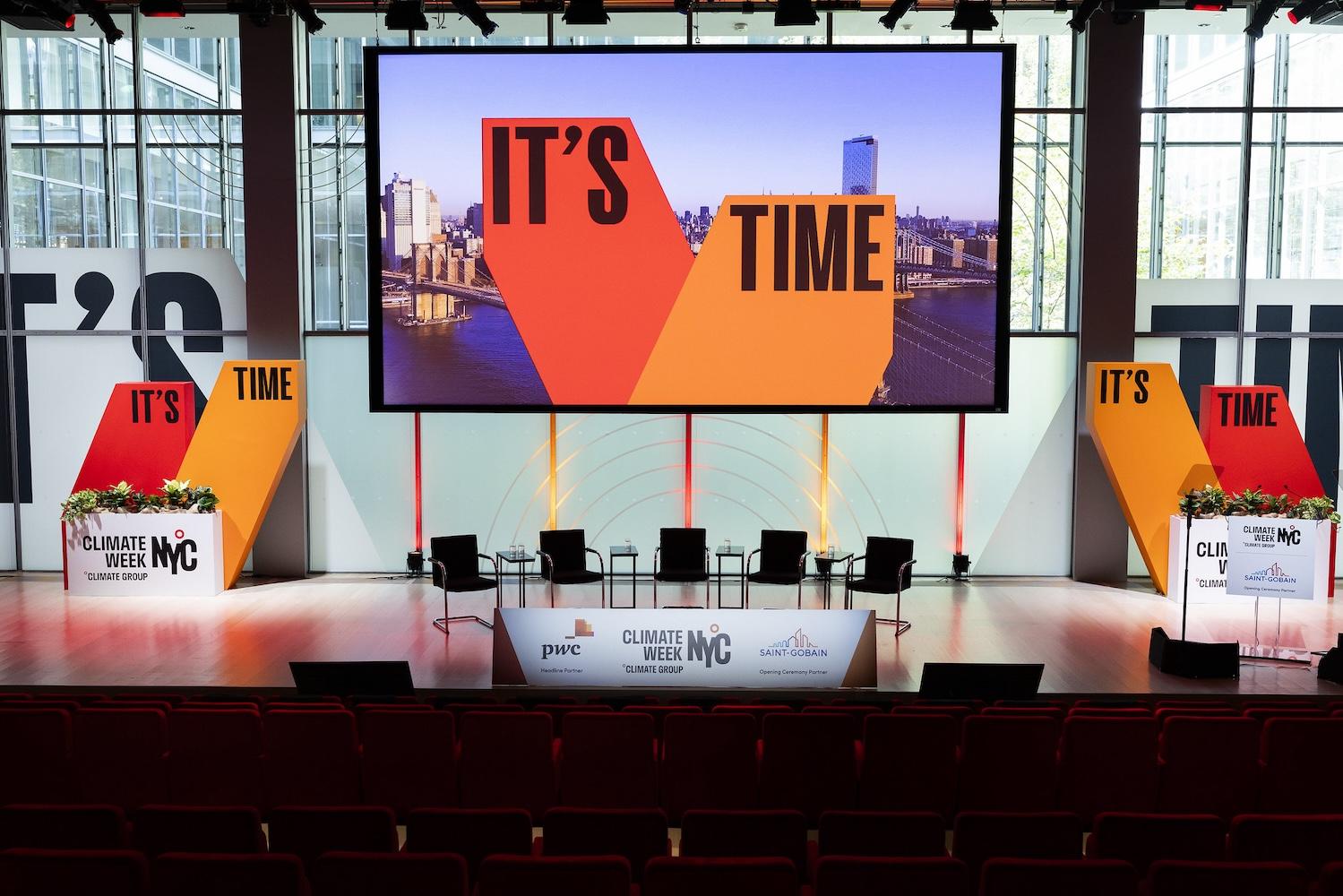
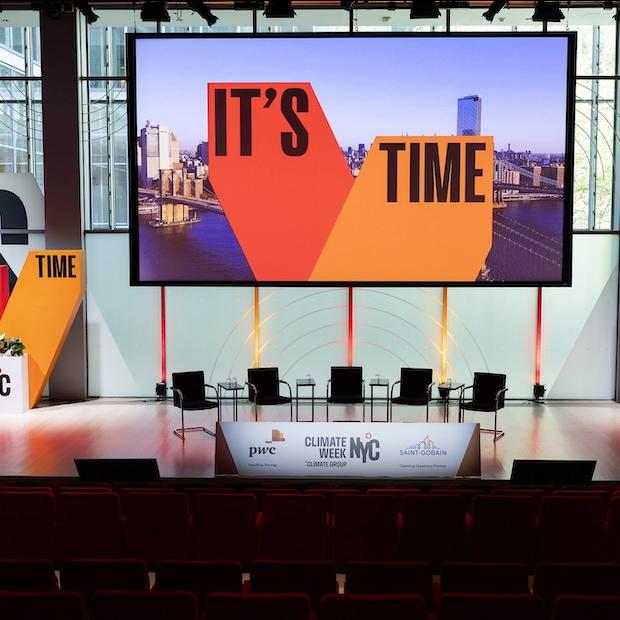
(Image credit: The Climate Group)
For many communications pros, especially those working in business-to-business industries, a content victory is getting a nod from the boss to spend a few hundred bucks for a video or stock images to illustrate a story and, hopefully, drive just a little more engagement.
In the growing field of sustainability communications, where getting it right can yield improved reputation and market share, those working for film studios and television networks are eager to mentor those outside the entertainment sector to think bigger.
“Anytime you can have Meryl Streep answer a question for you, I recommend it,” quipped Sam Read, executive director of the Sustainable Entertainment Alliance, during a Climate Week event on storytelling hosted by Futerra.
After screening “Want to Tell a Great Story?,” a sizzle reel narrated by Streep featuring TV and film clips referencing the climate crisis, Read and business leaders from Paramount Global and NBCUniversal spoke about how they tap into actors and less obvious tactics to weave climate into content that’s consumed across the globe in theaters, TV and mobile devices.
At Paramount Global — whose properties include CBS, Showtime Networks, Paramount Pictures, Nickelodeon, MTV, Comedy Central, BET, Paramount+, Pluto TV and Simon & Schuster, among others — considerations around climate messaging range from explicit plot lines to less obvious imagery.
“Passive content can be flying over a neighborhood and there are solar panels. They’re not discussed, they’re not part of the plot line, they are just part of the reality,” said Jessica Thurston, vice president of ESG strategy at Paramount Global. Environmental posters lining the halls at North Shore High School in the movie "Mean Girls" is another example of a subtle nod.
Topics championed by Paramount include warming oceans, diversity, climate justice, and access to energy and water. Opportunities for storytelling differ depending on what the medium and the brand is, said Thurston, who acknowledged her position does not give her the power to force a producer to turn an entertainment project into a documentary.
“It is important to be realistic,” she said. “What I never want to do is kind of walk into these spaces and be like, 'I’m here from corporate and I’m here to help.'”
Nickelodeon leveraged SpongeBob’s 25th anniversary this year in a campaign dubbed “Reverse Littering,” which aims to remove 5,000 tons of ocean-bound plastic and debris from waterways by 2027.
Similar efforts are under way at Universal Filmed Entertainment Group, the unit of NBCUniversal encompassing Universal Studios and Dreamworks, where the GreenerLight Program looks to embed sustainability into the filmmaking process from script to screen and throughout development, production and distribution.
“We’ve had such freedom to meet with our filmmakers and talent to look for opportunities within our stories to have them use their voices to talk about sustainability,” said Kimberly Burnick, director of sustainable content and partnerships for NBCUniversal.
In Universal’s 2024 environmental blockbuster film "Twisters," the cast and crew were counseled by the nonprofit Natural Resources Defense Council (NRDC) to bring accurate science to the film, Burnick said.
“We wanted to also engage audiences within the marketing of the film, so we were excited to have an in-theater [public service announcement], which we did with the director. That’s a way to reach millions,” she said.
Actress Lupita Nyong’o created a similar PSA to accompany the new DreamWorks film "The Wild Robot." "In the segment, Nyong’o tells audiences what they can do to protect the environment like her character does within the story,” Burnick said.
U.S. Businesses Are Rediscovering Small Wind Turbines
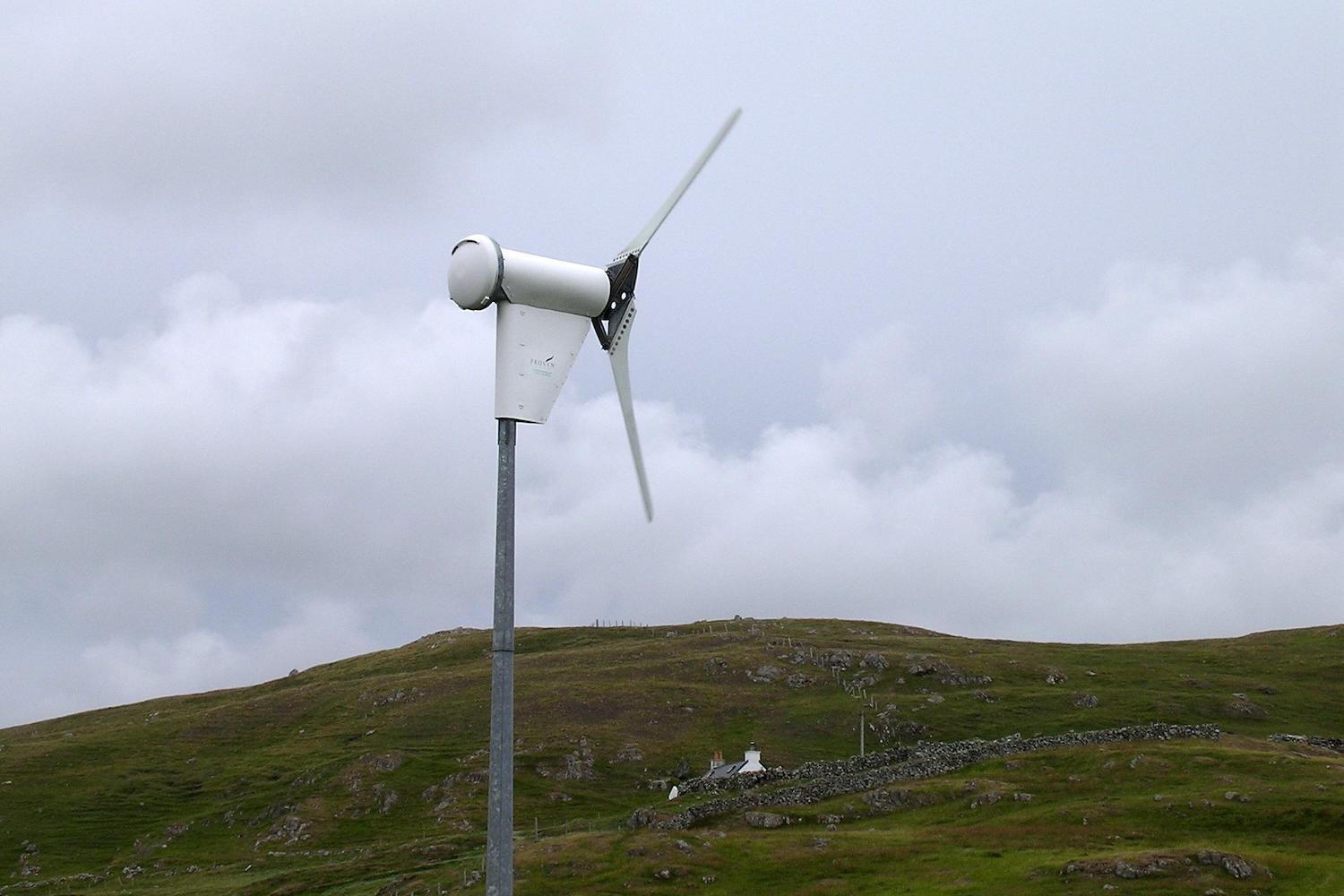
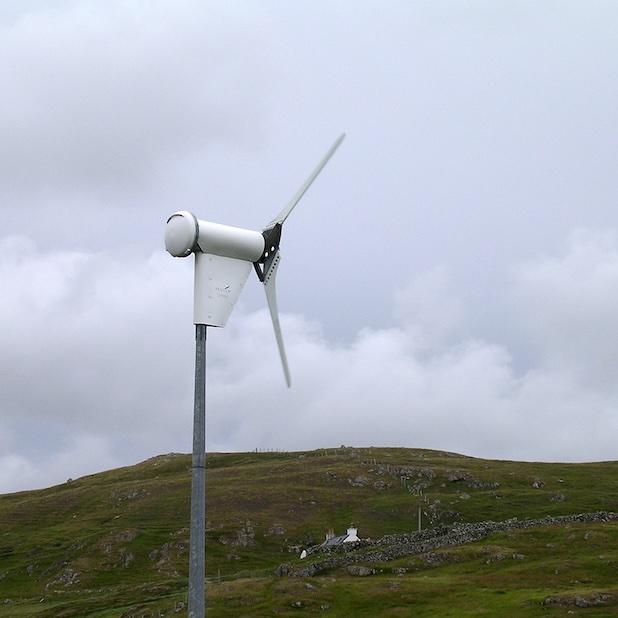
Small wind turbines like these can power homes, farms and businesses with onsite renewable energy or provide energy to infrastructure in remote locations. (Image: cowrin/Flickr)
U.S. businesses were using small-scale wind turbines to generate their own electricity long before massive wind farms were commonplace. The small wind market is still struggling to reach mainstream mass, but the technology has improved over recent years and costs are coming down. New incentives are also available to make small wind projects a more attractive option for businesses seeking on-site renewable energy for themselves and their communities.
How do small wind energy systems work?
The small wind market includes two types of projects that sometimes overlap. Both have the potential to make a significant contribution to the nation’s renewable energy profile, as measured by the U.S. Department of Energy.
One type of small wind project consists of wind turbines that are literally small in size. Where local zoning regulations permit, they can be installed at homes, farms or small businesses to open up access to renewable energy. A 10-kilowatt turbine, for example, can generate enough electricity for a typical home.
On a national level, those small kilowatts can add up to make a significant impact. A 2002 small wind “roadmap” from the U.S. Department of Energy estimated that small wind turbines could produce a total of 50,000 megawatts of electricity by 2022, accounting for 3 percent of U.S. generating capacity. That rate of growth failed to materialize, with only around 30 megawatts of small wind units sold globally in 2021, according to research from the European Academy of Wind Energy, leaving much of this energy potential still to be tapped.
The other type of small wind project refers to wind turbines of any size that provide electricity for use on the property where they are located, or for distribution to other electricity users on a local grid. Called “distributed wind,” these projects are also valued for their contributions to the nation’s generating resources. Farms, businesses or communities can use distributed wind as a buffer against energy cost increases, to provide backup power during outages, or to electrify things like water pumps and telecommunications towers in remote places, according to the Energy Department's Wind Energy Technologies Office.
Because distributed wind projects are typically specific to a single property or structure, they usually consist of just one turbine that is relatively small in size. However, larger-sized, multi-turbine projects are also becoming more common in the distributed wind field.
Small wind is finally going mainstream
When small wind turbines became more popular on the heels of the 1970s oil crisis, the industry faced criticism for relatively inefficient technology, questionable sales practices, and the absence of uniform standards. Since the early 2000s, though, small wind manufacturers, the Energy Department and other stakeholders have collaborated to form a reliable marketplace characterized by uniform assessment and certification systems.
That multi-stakeholder support is beginning to show results in the distributed wind marketplace. This week, the Department of Energy’s Pacific Northwest National Laboratory summarized the state of affairs in its newly released Distributed Wind Market Report, showing that more turbines were installed in 2023 than in all of 2021 and 2022 combined.
The report links the sudden growth spurt in the distributed wind market to new tax incentives, including provisions of the 2022 Inflation Reduction Act. A new round of funding from the U.S. Department of Agriculture’s Rural Energy for America Program also played a role.
Just as significantly, distributed wind projects are emerging in new markets, the report finds. Once mainly confined to farms, schools, government facilities and other institutions, distributed wind projects are finding their way into the manufacturing sector.
Larger-sized wind turbines are also becoming more common in distributed wind projects. The report tracked almost 2,000 new distributed wind turbines in 2023 with a combined capacity of 10.5 megawatts, most of which came from turbines with a capacity of 1 megawatt or more.
Meanwhile, continued improvement in vertical axis wind turbine technology also makes development possible in smaller spaces. Unlike conventional wind turbines that sweep the sky with long blades, vertical axis turbines spin around a central pole like a carousel, saving a considerable amount of space and opening up a new field of locations for small wind projects.
More on-site wind power for U.S. businesses
One important indication of the increased confidence in distributed wind is the willingness of businesses to invest in larger turbines, and that is also reflected in the Pacific Northwest National Laboratory report.
While farms continue to be important markets for distributed wind, the report found that 42 percent of distributed wind projects were installed by the commercial sector in 2023, compared to 34 percent for agricultural operations.
One example the researchers cite is a new 2.8-megawatt wind turbine installed by the electric vehicle manufacturer Rivian for its factory in Normal, Illinois, representing a new market for distributed wind in the auto industry. The report also points to a trio of 1.5-megawatt turbines installed at the Martin Marietta lime plant in Woodville Township, Ohio, as examples.
Follow the money — and the guidance
A collaboration between the U.S. departments of Agriculture and Energy aims to grow the small wind market further by encouraging 400 farmers to install distributed wind projects on their properties. In support of that program, the two agencies are also tapping wind industry stakeholders for funding under the Competitiveness Improvement Project program. The awarded projects include small-sized turbines, rooftop turbines, and vertical axis turbines.
Concurrently, the Energy Department has assembled an online small wind guidebook for small businesses, farmers and homeowners. The guide includes a question-and-answer section to help property owners determine if a small wind project is feasible and beneficial for them.
One additional advantage for businesses is the visibility of wind turbines. Compared to rooftop solar panels, which are often difficult to see from street level, a small wind project — or a hybrid wind-plus-solar project — signals a business’s commitment to renewable energy. Despite the growing partisan divide, that’s a commitment worth emphasizing.
The Casualties of Inequitable Decarbonization


(Image: Fuu J/Unsplash)
At the end of July, the Science Based Targets initiative (SBTi) — currently the world’s leading arbiter of corporate climate targets — released a long-awaited update on guidance for how companies can achieve Scope 3 emissions reductions. Scope 3 emissions are the indirect emissions that sit upstream and downstream in a company’s value chain. They can comprise 75 percent or more of a corporation’s total climate footprint.
Earlier this year, SBTi ignited an initial firestorm with its controversial announcement affirming the value of environmental attribute certificates (EACs) — such as carbon credits and sustainable aviation fuel certificates — and signaling an expanded role for them in corporations' decarbonization toolbox. Then came an abrupt about-face in SBTi’s end-of-July communications, which suggests a newfound skepticism around EACs, potentially disallowing climate investments made outside a company’s value chain from counting toward that organization’s carbon footprint.
This skepticism arises from three primary drivers. First, the definitions of what’s “in” versus what’s “out” when it comes to companies’ Scope 3 supply chain boundary, relegating projects like clean cookstoves and forest conservation to the category of "not my problem."
Next, the concern that avoided emissions and carbon offset projects don’t deliver the climate benefits they claim to, in which rightful attention paid to some lackluster projects has dampened the voluntary carbon market’s enthusiasm for entire classes of emissions-reducing projects.
And the disregard for the equally important human social and economic non-climate benefits that climate projects deliver, precisely at a time when we’re seeing corporations value so-called co-benefits more than ever.
The prospect is frightening for reasons few are talking about. If SBTi stays the course of its recent pivot, it could wipe out a vital incentive for desperately needed climate finance to flow from Global North corporations to Global South nations, projects, and people on the front lines of climate change. Millions of lives — and gigatons of avoided carbon emissions — hang in the balance, as London-based SBTi potentially turns its back on equitable decarbonization.
For example, every year, energy poverty kills an estimated 3.2 million people worldwide from smoke inhalation due to daily cooking on heavily polluting wood and charcoal stoves, according to the World Health Organization. That’s more than the total annual deaths attributed to HIV, malaria and tuberculosis combined. Those same toxic biomass fuels contribute about the same amount of climate pollution every year as the global aviation industry.
These are the very real people — and equally real carbon emissions — at stake in SBTi’s seemingly esoteric decisions regarding EACs and corporations’ value chain emissions. Yet across the 100 pages of SBTi’s new Scope 3 discussion paper, the Global South, emerging economies, developing countries, and climate justice are mentioned exactly zero times. On this front, SBTi could very well find itself on the wrong side of history.
Equitable decarbonization and climate finance are both a moral imperative and a pragmatic issue of achieving global climate targets. The Global South’s inclusion in overall decarbonization efforts is necessary to achieve global net zero emissions. To succeed, climate investment in Global South economies needs to reach anywhere from $1 trillion, to $2 trillion or even $3 trillion annually. However, both investment and global emissions-reductions trends are seriously lagging.
Only 25 percent of global climate investment flows to Global South countries currently, and almost none of that is to least developed countries. The multilateral Global Environment Facility — the world’s largest funder of climate change response in developing countries globally — in its most-recent funding replenishment cycle saw pledges totaling just $5.3 billion for the four-year period spanning 2022 to 2026. That works out to $1.33 billion per year, a scant 1/100th of the at least $1 trillion annually that’s needed.
Against this backdrop, SBTi’s pending ultimate decision about companies’ Scope 3 emissions and which climate investments they can “count” against their inventories holds particular gravitas and perverse irony. The people of the Global South are customers of Global North companies. They consume Nestle and Unilever and use Google, Meta, Samsung and Apple to communicate. And herein lies the avoidable tragedy.
As the rules-maker, SBTi is currently hurtling toward a value system of Global North voluntary corporate decarbonization that tells companies to tackle the embodied emissions of the cell phones in Ugandan homes, while ignoring the deadly pollution from the smoky cookstoves in those same homes. It is a value system that cares about reducing the emissions of a copper mine in the Democratic Republic of the Congo that supplies Big Tech far more than it cares about saving a ton of emissions from deadly indoor air pollution in the home of a miner that works in and lives next door to that mine.
SBTi is relegating investments into solutions such as clean electric cookstoves as “beyond-value-chain mitigation” and disallowing these investments from counting toward corporations’ net zero emissions bottom line. SBTi “encourages” companies to pursue these investments, but that’s a hollow endorsement. The history of corporate climate investments consistently reinforces that companies invest in what they can get credit for. It’s naive to suggest that companies will rush to voluntary investments they can’t get credit for, especially when such investments go above and beyond the already-voluntary rules of the SBTi net zero standard itself.
Those of us working to scale anti-poverty decarbonization projects in Africa see this dynamic playing out every day among the corporate sustainability professionals we talk to. The electric cookstoves we make available need huge subsidies to be accessible and affordable for the low-income households where emissions reductions also save real human lives. But when we approach companies to invest in promising projects, the typical response we get to these requests is, “It’s almost impossible to spend money on impact I can’t count.” Sometimes, the response is even more direct, “SBTi doesn’t sanction it.”
Some 2.3 billion people rely on toxic biomass fuels to cook each day. Every electric cookstove — made possible with would-be climate finance from Global North companies — could eliminate toxic indoor air pollution by removing wood fuels from daily cooking needs, preventing avoidable premature deaths. Measured through the lens of climate action, the potential is nearly 1 gigatonne of emissions reductions annually.
Corporate work to achieve global net zero need not be an either/or dichotomy. We are not forced to choose between social impact and climate justice for the Global South on one hand and decarbonization of predominantly Global North companies on the other. Investments in solutions like electric cooking for the Global South are also investments in cost-effective climate action and decarbonization for all. This is true equitable decarbonization, yet current sources of voluntary climate finance are drying up.
If those with ideological aversions to companies claiming impact from beyond-value-chain mitigation investments successfully persuade SBTi to disallow such investments from counting toward corporate net zero calculations, it will further choke off a major source of funding that supports projects that benefit those most vulnerable to climate, poverty and health risks.
The world wouldn’t dare pull an about-face on aviation decarbonization nor on efforts to eradicate deadly diseases such as malaria. Yet, the world of voluntary decarbonization is being given rules that turn climate finance more and more away from an emissions problem and a human crisis that’s of the same magnitude: dirty cooking fuels. In doing so, SBTi is taking projects like electric cookstoves for the most-vulnerable people off the table of corporate climate investments. Imagine instead if corporations were encouraged to value human lives as much as they valued adherence to a dictate from the Global North on where exactly a supply chain starts and stops. We could get closer to global net zero, and save more lives, with the same level of investment.
Equitable decarbonization is possible. This is the time for the world to embrace that ethos. SBTi can lead on this front, but only if it writes rules that incentivize companies to make more climate investments that help tackle pervasive Global South challenges.
The Program Building Women's Economic Power Through Entrepreneurship
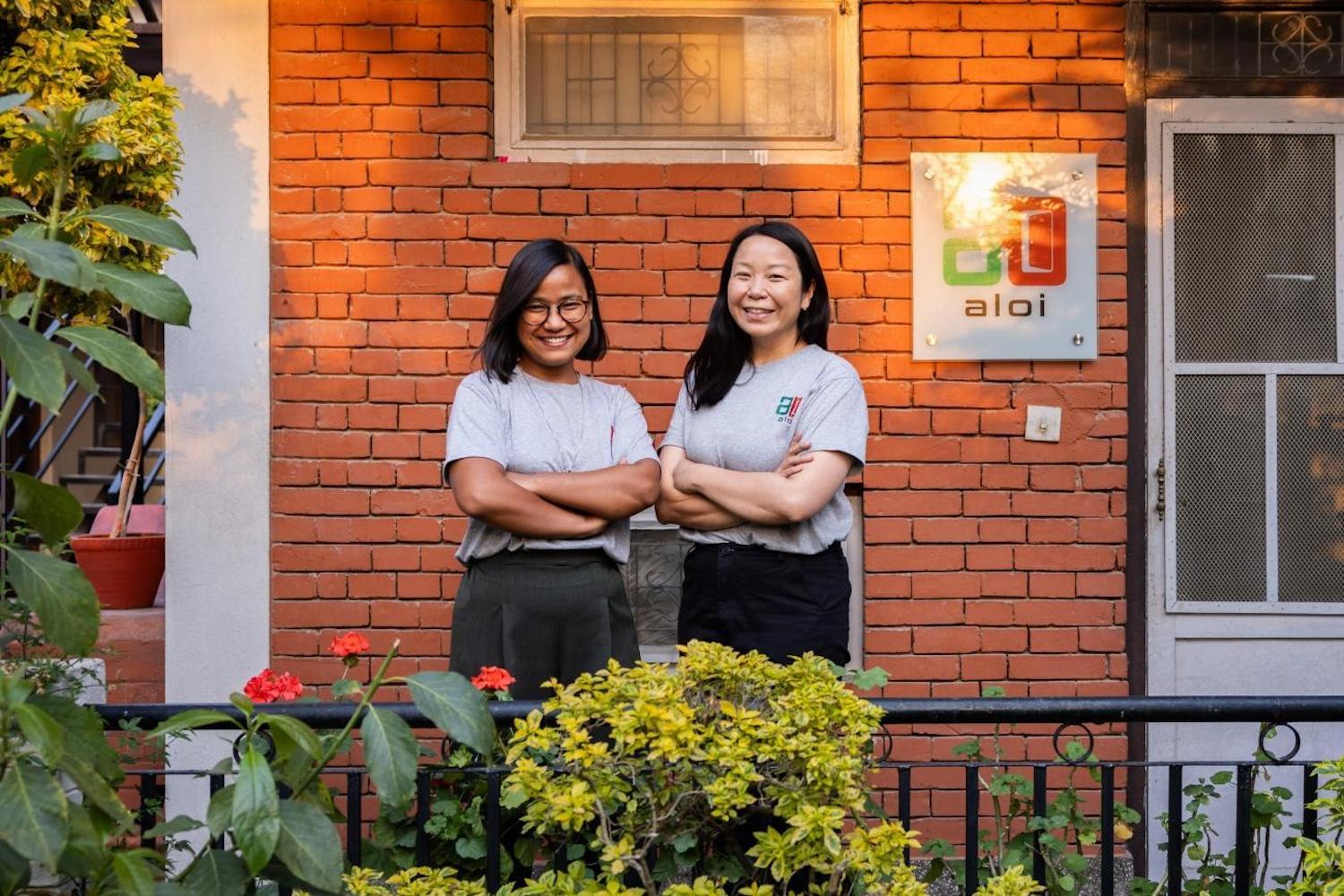

Sonika Manandhar and Tiffany Tong, the founders of Aloi, a Nepal-based company that helps entrepreneurs access financing. (Image: Lauren DeCicca for ESCAP)
Women in low-income countries are more interested in starting businesses and show more intention to do so, according to a report by the research consortium Global Entrepreneurship Monitor. These countries also have the highest startup rates for women, who tend to offer more innovative products and services than women in high-income regions. Despite this, women entrepreneurs often face greater challenges than men, such as barriers to accessing capital and developing the infrastructure needed to scale their businesses.
Founded in 2018 by the United Nations Economic and Social Commission for Asia and the Pacific (ESCAP) and Global Affairs Canada, the Catalyzing Women’s Entrepreneurship program aims to build women's economic power and reduce poverty in the Asia-Pacific region. Through this program, ESCAP addresses the challenges faced by women-led businesses.
Providing access to capital, business infrastructure and technology
To date, the program has supported more than 220,000 women entrepreneurs and secured over $111 million in capital. The support available to women entrepreneurs varies on the specific context of the six countries the program targets: Bangladesh, Cambodia, Fiji, Nepal, Samoa and Vietnam, Elena Mayer-Besting, the program management officer at ESCAP, said in an email.
The program offers a range of financial support options, from microloans to large-scale equity investments. It also provides short-term and long-term training, coaching, and networking opportunities in topics like information and communication technology, attracting foreign investments, and integrating climate adaptation and mitigation into business operations.
The women-founded financial tech company Aloi is one of 15 fintech and digital companies that received financing and technical support through the program. The platform makes financing accessible for informal micro-entrepreneurs in Nepal by digitally monitoring loans and repayments through cell phones, with no internet access required.
To boost her income, Sumita Rai trained as a Safa Tempo driver — a popular form of public transport in Kathmandu, Nepal — with the aspiration of owning her own Safa Tempo vehicle and business. Through Aloi, Rai secured a loan to buy the necessary battery for her own electric vehicle.
With this support, Rai earns more, provides for her son's education and drives a more sustainable vehicle. It allows her to make more trips and reduce her carbon footprint, compared to when she was employed driving a less efficient battery-powered vehicle owned by someone else.

"Addressing all of these [challenges] is important to ensure not only that women get the opportunities they deserve, but equally if we don’t deal with these topics now, we may even see a regression of women’s opportunities and a widening of gender inequality,” Mayer-Besting said.
Adjusting support to tackle challenges
Since the program’s inception, challenges and events like the pandemic and climate crisis required adjustments in supporting women entrepreneurs, Mayer-Besting said.
"The climate crisis is already shaping the day-to-day of many women entrepreneurs we work with, while we still hear investors saying, ‘We’d love to invest in women-led climate solutions, but we just can’t find any women,’” Mayer-Besting said.
To tackle these issues, ESCAP provided funding for local women's groups and organizations to help their members with climate challenges and adaptation strategies and established an accelerator to connect women-led climate tech companies with investors, she said.
Empowering women and adding trillions to the economy
“When women have an income [or] a higher income, their economic power changes," Mayer-Besting said. “They can make purchasing decisions. In many contexts, they experience lower rates of male violence … When these changes happen at an individual level, they change lives. When they happen at a larger scale, they change societies and create a better world for women and girls.”
Closing gender gaps in economic opportunities in Asia and Pacific regions will contribute and estimated $4.5 trillion to the region’s gross domestic product, according to research from the McKinsey Global Institute. Achieving this growth depends on three key factors: women’s participation in the workforce, promoting full time work, and boosting women's productivity by adding them more to industries with greater output.
“Every life we can change for the better is worth it,” Mayer-Besting said. “However, changes at the individual level can easily be ‘eaten up’ if the larger conditions, societal values, systems don’t truly let women thrive. That’s why we need programs that create sustainable solutions at scale.”
Can Rod and Reel Gear Save Nova Scotia’s Swordfish Harpoon Fleet?
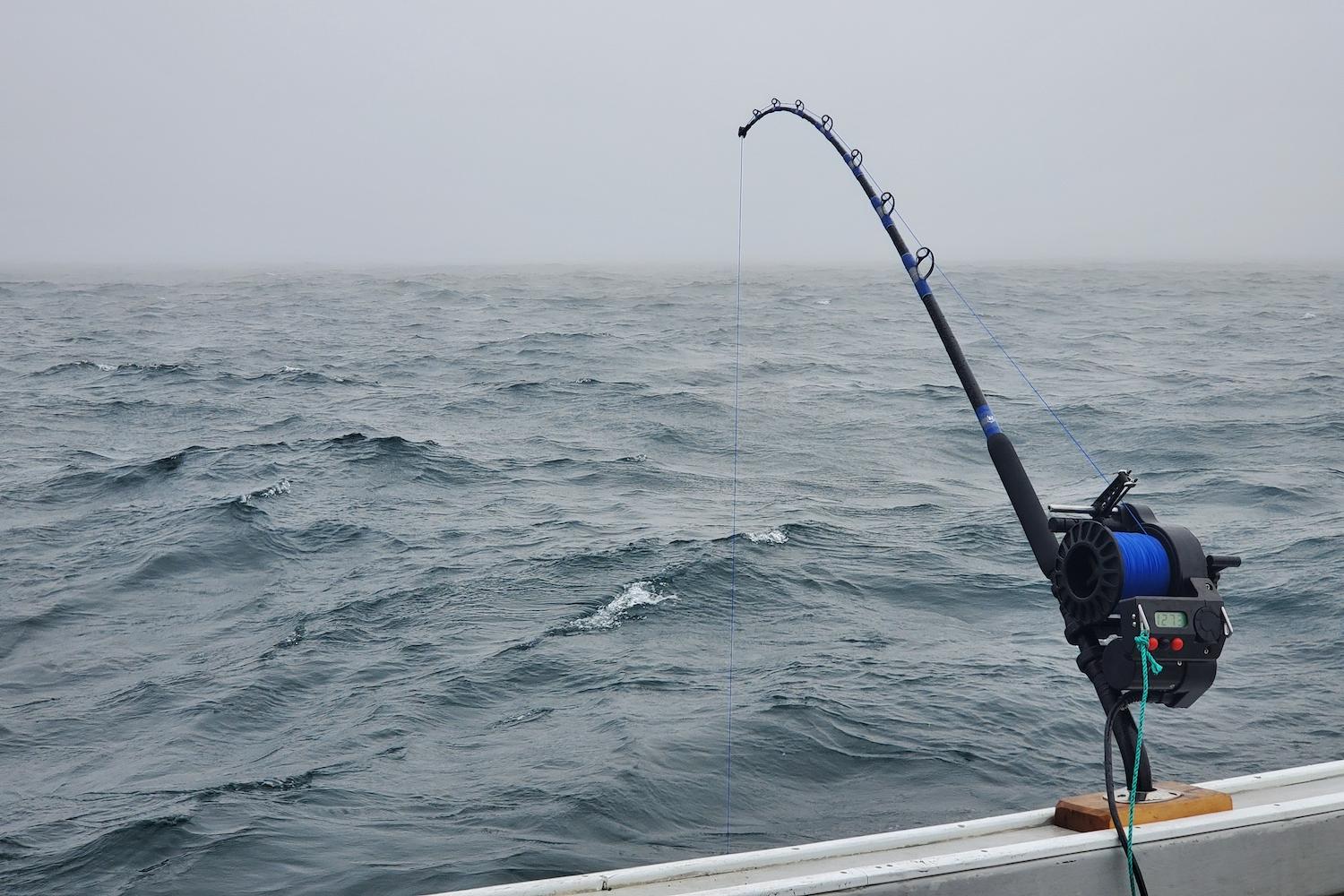

Adding rod and reel gear to a historic, sustainable swordfish harpooning fleet in Nova Scotia would help raise its total catch, which was lower than their allowed quota in recent years, and remain financially viable. (Image: Sebastiàn Pardo)
Changing seas are affecting swordfish behavior, and that’s having devastating effects on Nova Scotia’s sustainable harpoon fleet. To keep the fishery going, the fleet wants to add rod and reel gear as well as charters. In a new report, the fleet and the Ecology Action Center of Canada predict that charters could bring in annual income increases of $2.5 million CAD ($1.8 million USD). And by adding additional gear, license holders would raise their total catch, which has been lower than their allowed quota in recent years.
Solutions for a historic fishery at risk
“This fleet is one that has been happening in our region for well over 100 years,” Holly Isnor, the marine campaign coordinator at the Ecology Action Center, told TriplePundit. “It's a very clean, sustainable option [that] provides local jobs.”
As a highly skilled trade, harpoon fishing is not something Isnor wants to see lost. “Proposing the options of rod and reel and chartering but maintaining the catches within the current quota would enable that increase in economic return that the fleet needs to stay afloat,” she said.

The quotas for the swordfish harpoon fleet are already low, but the even lower returns have resulted in fewer boats going out, Isnor said. With the amount of time it takes to travel far enough offshore, the days spent at sea, and the cost of fuel, it’s not worth the trip if there aren’t any swordfish that can be harpooned.
Dwindling catches aren’t related to the population. While swordfish have headed north into the colder waters of Newfoundland, their population has remained stable in Nova Scotia, Isnor said. Instead, lower yields among the harpoon fleet boats are due to a change in basking behavior.
“[Swordfish] hunt deeper in the water column, and then they bask near the surface to regulate their body temperatures. And with a handheld harpoon, of course, it requires that a fish is actually at the surface where you can see it in order to be able to catch it,” she said. “With changing ocean conditions and sea surface temperatures, it's essentially meant that swordfish are basking at the surface in places and times that are less predictable than they once were for this particular fleet. So it's just making it a lot more challenging for them to find the fish to be able to catch them.”
Having to leave their quota in the water threatens the long-term viability of the fishery and the jobs that it sustains, Isnor said. By adding rod and reel gear, fishers can catch swordfish where they are: lower in the water column.
Maintaining sustainability is a core value
The harpoon fleet in Nova Scotia isn’t the only fishery experiencing such changes. The Nature Conservancy promoted the use of deep-drop fishing gear off the coast of California to keep a sustainable catch going amidst a similar drop in basking swordfish.
Unlike gill nets and pelagic longlines which can hook unintended species and endanger marine mammals and sea turtles, spearing swordfish with a harpoon requires the fisher to visibly identify each individual target, thus ensuring that other species are not harmed. Together with the harpoon fleet, the Ecology Action Center started trialing the rod and reel method in 2022.
While not as precise as harpoon fishing, the trial demonstrated that swordfish could be caught with minimal unintended catches of other species — none of which consisted of sea turtles or marine mammals — when harpooning was not feasible. Meanwhile, participating license holders could charge $20,000 CAD ($14,800 USD) for private charters with rod and reel gear for two passengers.
“Giving this fleet the option to add a charter component to their business, it really enables them to have an additional stream of income while, again, remaining within their quota,” Isnor said. “So it increases the value of their catches overall. It doesn't increase the effort, it just increases the value and the income.”

Government approval is needed before changes can be made
To make these changes, the fleet needs the approval of government agencies. The Department of Transport Canada would have to approve the charter element, and rod and reel permissions are dependent on the Department of Fisheries and Oceans. Additionally, boats need to be assessed and approved individually, with some financial costs likely required to meet the requirements and ensure proper accommodations, Isnor said.
“We've worked quite closely with some government staff on the rod and reel gear trials, and they've been great to work with and supportive of the work that we're doing,” she said. “While I don't suspect that it will happen overnight, I am hopeful that we're moving in the right direction towards getting the rod and reel added to their licenses and then finding solutions to enable them to offer charters as well.”